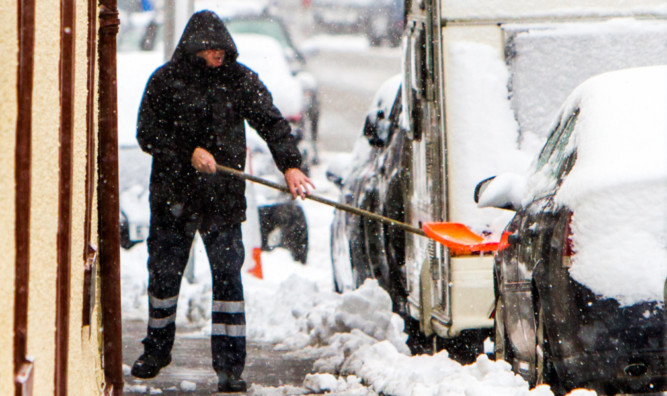Angus Council tax would have to rise 88% to plug the £52 million financial black hole facing the authority in the next three years.
It’s a hike which would take the Band D rate from £1,242 to more than £2,300 a year.
And it’s been used by finance chief Ian Lorimer to highlight the council’s reliance on Scottish Government cash to balance the books.
In his latest warning over the scale of the challenge facing Angus, he has told residents to be ready for a “reality check” when the 2023/34 budget is set next month.
It’s an echo the message from neighbouring council leader John Alexander after he said there were “no quick fixes” for Dundee City’s financial woes.
Increased charges
Mr Lorimer says: “The medium term budget strategy projects that the council will need to save nearly £52m in the next 3 years.
“If addressed solely from increases in Council Tax, (the funding gap) would require an increase in the current level of Band D Council tax of 88%.
“Clearly that is not a realistic option but it does serve to emphasise the extent to which the council relies on grant from the Scottish Government for the majority of its funding.”
“Some of that figure may be able to come from additional income including Council Tax increases and increases in the fees and charges the council levies for some services.
“Whatever amount of the £52m is not covered by additional income will need to be met by cuts in expenditure.
“Those cuts in expenditure have to be made where the money is currently being spent.”
Where does Angus Council’s money go?
Mr Lorimer will deliver a report to all 28 Angus councillors on Thursday in which he has simplified down spending by each department.
And the top 15 areas of expenditure account for more than 70% of the £300 million-plus budget.
Top of the table is £65.5m of funding to Angus Health and Social Care Partnership each year.
It represents 20% of the total annual budget – more than double the next highest area of spend.
Teacher costs account for three of the top five outlays, totalling more than £75m every year.
The council is also paying back loans for projects like the £53m dualling of the A92 between Dundee and Arbroath, completed almost 20 years ago.
There are also significant repayment costs for newer schemes such as community campuses in Brechin and Forfar.
Community collaboration
Previous budgets have seen pleas for communities to do their bit to help pull the council out of the financial abyss.
Almost a decade ago a former finance convener warned the days the “council will dae it” were past.
Mr Lorimer says the answer is not so easy.
“Various commentators on local government services suggest greater collaboration and working with partners and communities holds the key to local government’s financial challenges,” he adds.
“While these suggestions have merit and can play a part they do not reflect the realities of where and why the council spends most of its money.
“The vast majority of spending is in schools, adult care services and waste services.
“There are either limited opportunities to collaborate in those areas or the council is already doing so on a significant scale.”
“As has been highlighted in the corporate risk register, the risk of the council becoming financially unsustainable and being unable to meet all of its statutory duties is very high already.
“That risk will increase without a rethink about what councils are required to do, how they operate and how they are funded.”












Conversation